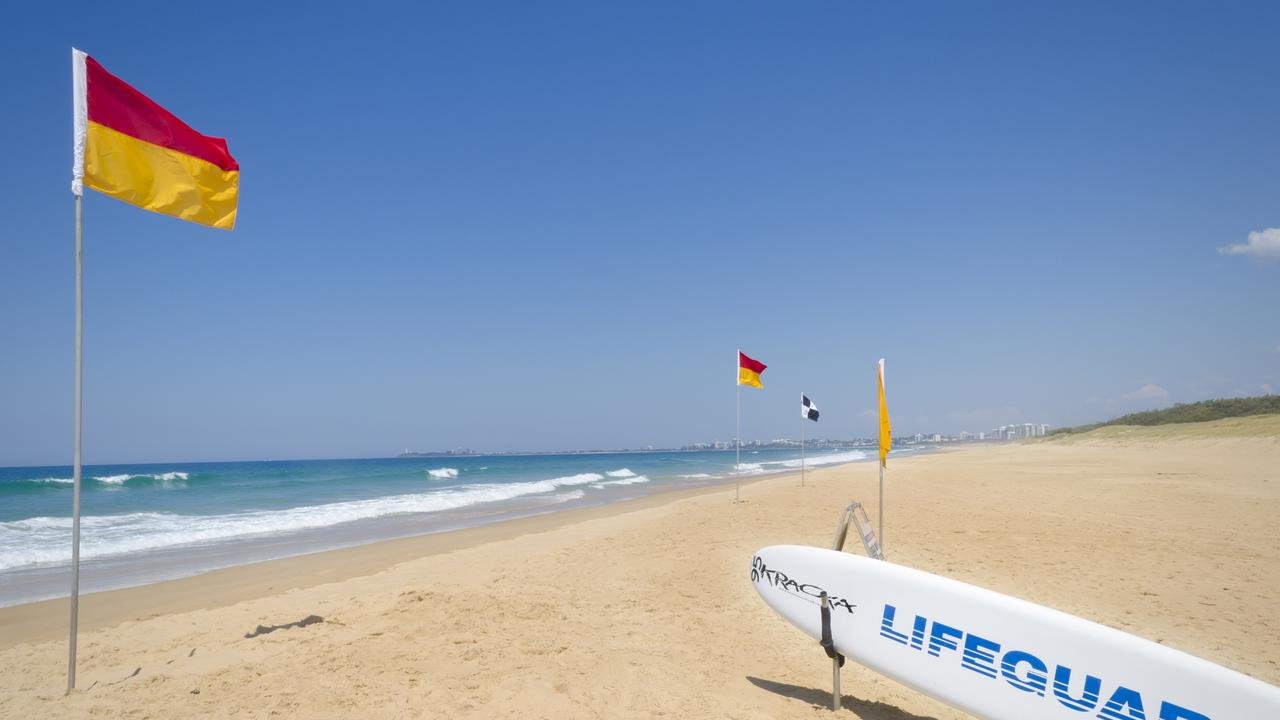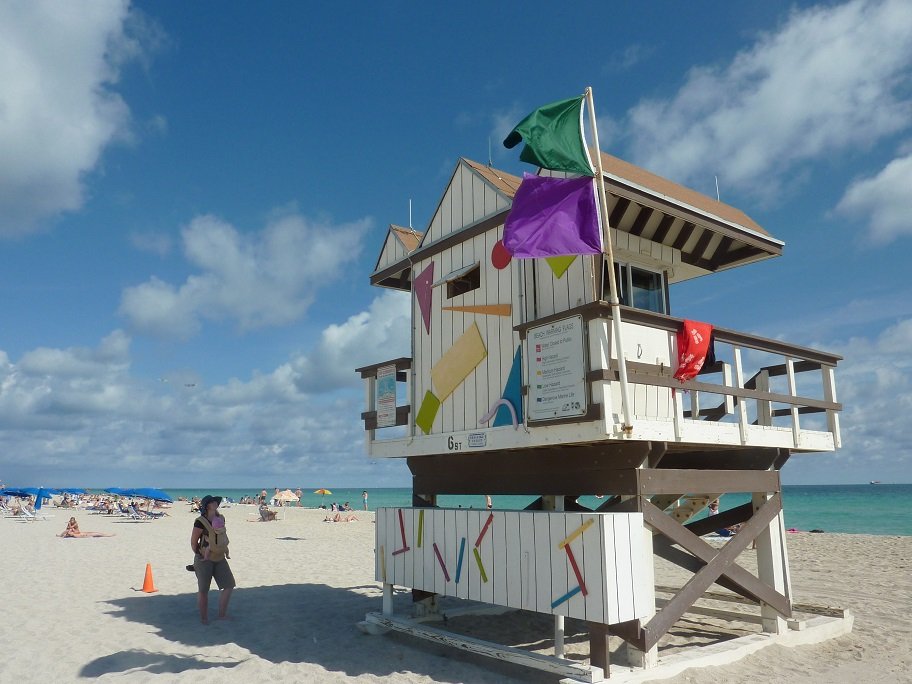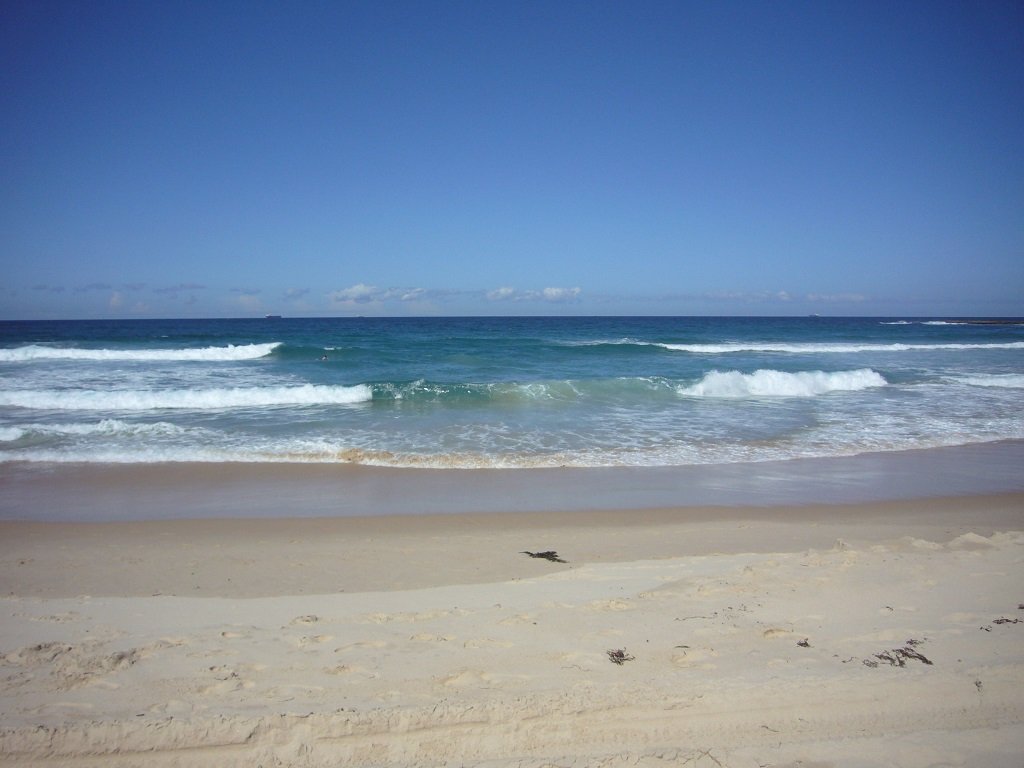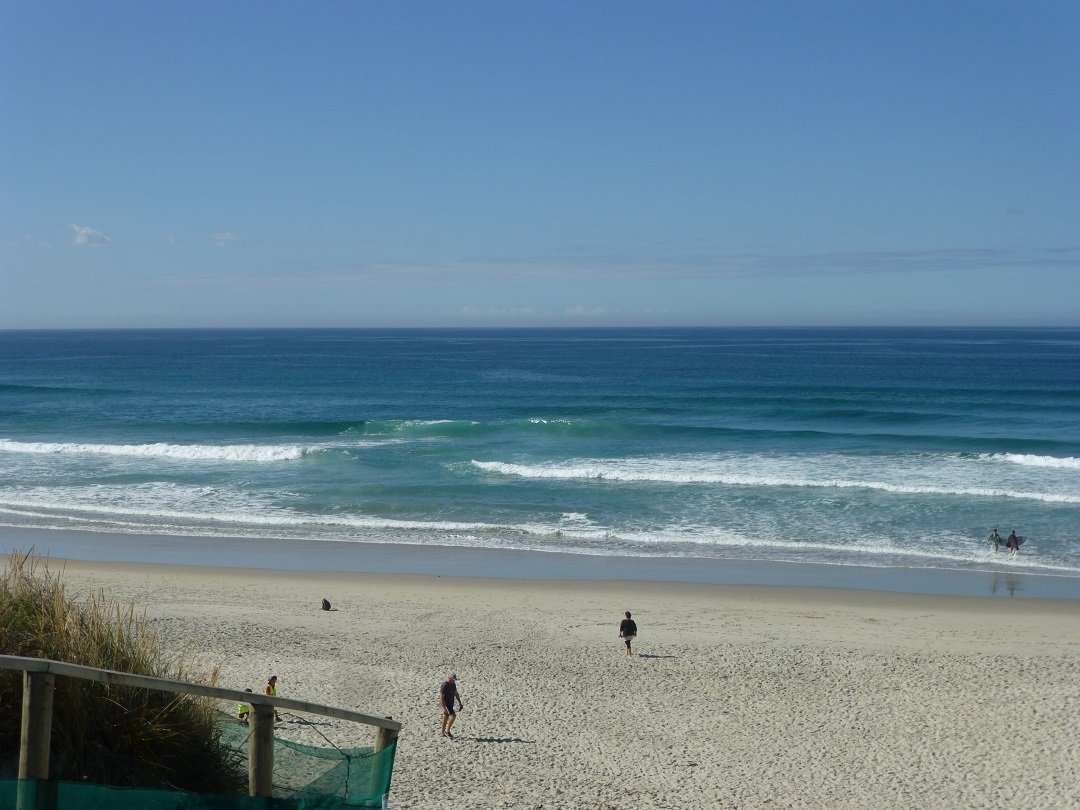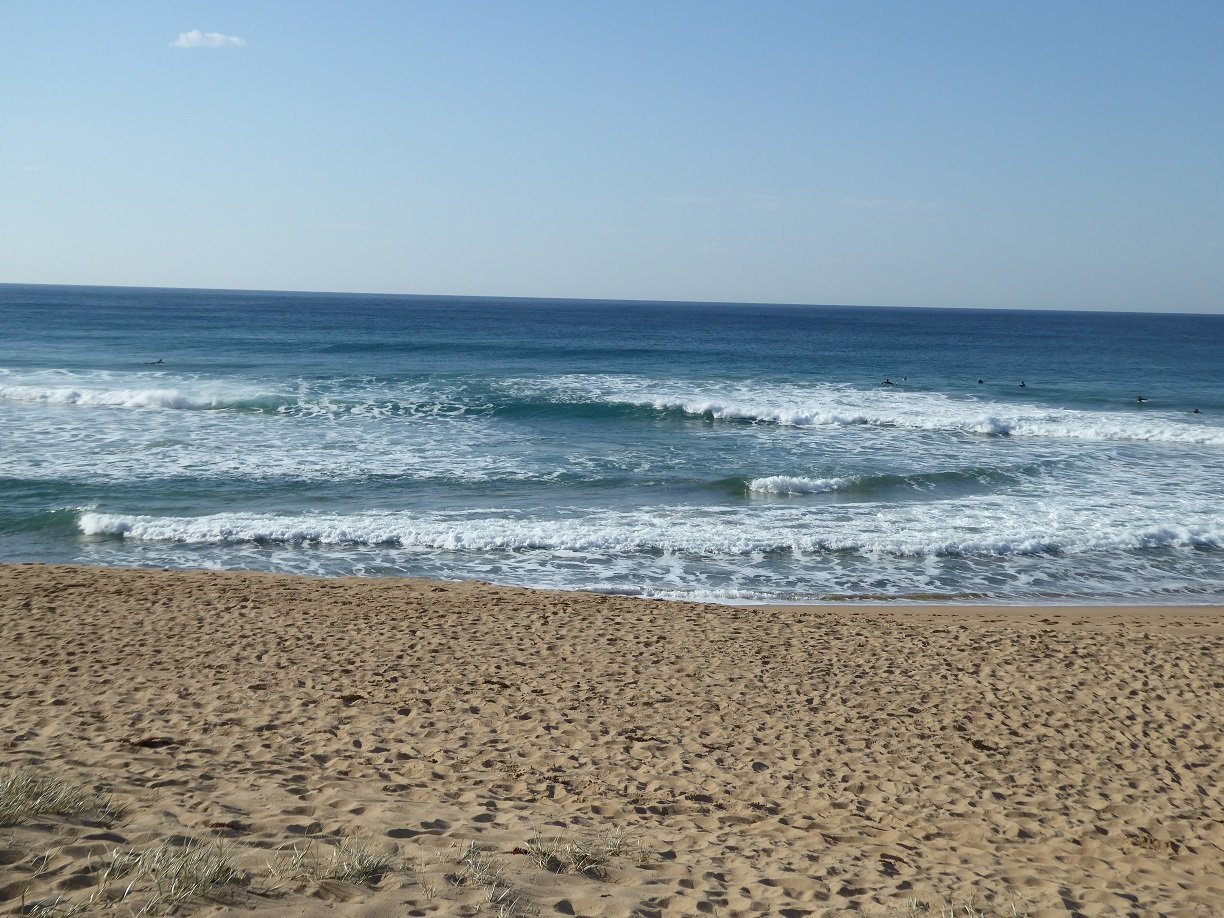
Rip Current Safety
Why are rip currents so dangerous?
Over the last 10 years in Australia, there have been an average of 26 people drown in rip currents every year and thousands more are rescued. As you can tell from the Surf Life Saving Australia statistics shown in the graph below, the situation is not improving (in Australia at least). There are hundreds, if not thousands, of rip current drownings each year around the world. So why do so many people get in trouble in rip currents?
Why rips are dangerous - some reasons:
They flow faster than most people can swim (and many people are poor swimmers)
They take people away from the beach (where they don’t want to be)
They occur on beautiful days when waves are small (when people go to the beach)
Most people have a poor understanding of them
Most people are not aware of how dangerous they can be
They are difficult to spot and most people are bad at spotting rips
People swim away from lifeguards and at unpatrolled beaches
People don’t know what to do when caught in a rip
Most people panic when they get caught in a rip
Swimmers at unpatrolled Berrara Beach, NSW Australia. The beach is popular because it’s surrounded by coastal tourist parks and is easily accessible (photo Rob Brander)
That’s a lot of reasons! The absolute best way to stay safe when you go swimming at an ocean beach is to always swim near lifeguards and in the case of Australian beaches, always between the red and yellow flags. But not every beach has lifeguards.
So let’s start talking rip current safety with some tips on how to spot rip currents. If you don’t get in a rip current, you won’t drown in one!
There are many different types of rip currents and many different visual signatures to look for, which makes rip spotting a tough task, but with practice I believe that everyone can learn how to spot a rip, or at least know the telltale signs to keep an eye out for.
Channelised ‘dark gap’ rip at Bondi Beach, NSW Australia (Photo Rob Brander)
Tip #1 Look for dark gaps
Many rips occupy deep channels between shallow sand bars or next to structures. Deeper water is always darker and waves also don’t break as much in deeper water. Therefore the rip current looks like a narrow dark gap between the whitewater of breaking waves, almost like a green path through the surf. Think ‘white is nice, green is mean’! White is ‘nice’ because waves are breaking, which means it’s a shallower area and the water is moving towards the beach. Green is ‘mean’ because those areas are deeper and could be over your head or indicate a rip current. This is the main way to spot channelized and boundary rip currents as shown in the images below at (from left to right) Soldiers Beach, NSW, Australia; Saint Kilda Beach, Dunedin, New Zealand; Stanwell Park Beach, NSW, Australia (photos Rob Brander).
It’s important to remember that these pictures are pretty obvious examples of a ‘dark gap’ rip. There’s always some waves breaking in the rip channel, which is why you need to watch the surf for a few minutes. If the dark gap keeps appearing in the same place, there’s a good chance it’s a rip.
Watch this video for a nice explanation for how to spot rips!
Tip #2 Look for embayments along the shoreline
Channelised rips can stay in the same place for days, weeks and months and the rip flow can actually erode embayments along the shoreline. Look along the beach and if you see a large embayment with a narrow dark gap heading offshore – bingo! That’s a rip.
Shoreline rip embayment at Stanwell Park Beach, NSW Australia (Photo Rob Brander)
Tip #3 Look for a water surface with a different texture
Rip flow moves water offshore whereas waves are moving onshore. This causes a bit of surface interference and the rip current often looks like areas of slightly bumpy, or mottled water, compared to areas of water next to the rip. Many channelized and boundary rips will have this visual clue as well as the dark gap to help you spot them.
The different surface water texture is the rip (Photo Rob Brander)
Tip #4 Look for clouds of turbulent water and sand heading offshore
Rips can flow pretty fast. Fast enough to carry suspended sand offshore. Wave breaking is what initially stirs up the sand from the bottom and then the rips take it offshore. These plumes of sand are more noticeable seawards of where the waves are breaking and generally occur after there’s been a strong rip pulse.
Flash rips also tend to look like a turbulent mess of streaky water and bubbles as well as sand clouds and they definitely appear heading offshore of the surf zone. The problem with these visual identifiers, however, is that you can’t really see this from the shoreline, you really need some elevation. And there’s no guarantees flash rips will form in the same place.
Flash rip at Zuma Beach California (photo LA County Fire Dept)
Tip #5 Look for stuff that moves!
Rips move water, but they also move suspended sand, seaweed, jellyfish, bubbles and people! Watch the same place in the surf zone and see if you can see a large section of water moving. It could be a rip.
Sign promoting Bondi Beach in Sydney Airport! (photo Rob Brander)
Tip #6 Check out the Rips of the Month section on this website!
There are hundreds of pictures for you to practice rip spotting from in the Rips of the Month section on this website. It’s the world’s largest collection of rip current images!
Tip #7 Some helpful hints!
Rips are easier to spot from above, so if you can, try and check out the beach from a headland, or the top of a sand dune, a parking lot, or even the back of the beach which is always a bit higher. Any elevation helps!
Wear sunglasses that have polarising lenses. These help cut through the glare when looking at the water and you can really see where the sand bars and rip channels are.
Take your time! Don’t just glance at the surf quickly. Spend a few minutes because conditions can change and rips will often reveal themselves if you spend a bit of time looking for them.
Ask a lifeguard! They know how to spot rips. Ask them if there’s any on the beach and if they can point them out. It’s a good way to learn through experience.
Caught in a Rip? What Should you Do?
Tens of thousands of people are caught in rips around the world each year. While many are rescued and many manage to get out of the rips themselves, others are not so fortunate. Every year hundreds of people drown in rip currents. So if you find yourself caught in a rip, what should you do? Well it depends on a number of factors and the important thing to remember is that you have options. The graphic at right was developed by Surf Life Saving Australia and also adopted in the United States (with some changes) and sums up what you can do to survive a rip current.
Stay Calm, Float and Seek Assistance
This is so important. As Bruce ‘Hoppo’ Hopkins from Bondi Rescue says ‘Rips don’t drown people, people drown in rips’. Mostly because they panic. This is the last thing you should do for a number of reasons. First, rips won’t pull you under the water. Second, they won’t take you across the ocean. Third, they won’t take you into shark-infested waters. Finally, because many rips re-circulate, there’s a good chance that the rip will bring you back into shallow water if you just relax, stay calm and float. Remember that rips aren’t trying to drown you, they are just taking you for a ride.
Floating also conserves your energy, but if you need help, the important thing is to tell someone! Raise your arm or wave it to attract the attention of lifeguards. Or call out to a nearby surfer because they have a nice flotation device you can hold onto.
This graphic from the documentary Rip Current Heroes shows how rip currents can often re-circulate. In this case, floating may bring you back into shallower water (image Jason Markland).
Try and Swim out of the Rip? Maybe….
I’m not a huge fan of promoting swimming out of rips. Sure you can try and swim out of one if you are a good swimmer - and I mean a good, strong experienced ocean swimmer. Rips are fairly narrow so you won’t have to swim far, but don’t sprint, just swim nice and steady and towards the side of the rip where there’s lots of waves breaking. That means it’s shallow and you might be able to stand up.
The old rule of ‘swim parallel’ to get out of the rip sometimes works, but rips don’t always flow straight out from the beach. Sometimes they flow at angles so you might find yourself actually swimming against the rip. If you do try swimming and find yourself getting nowhere, or getting tired…then just float!
If you do find yourself taken far offshore, then you need to swim along the beach far enough so that when you swim back in, you won’t be swimming back into the rip – a long swim!
Don’t Swim Back to the Beach Against the Rip
Many people who get caught in rips automatically try and swim back to the beach against the rip. Not good! Rips flow pretty fast and even good swimmers can find themselves getting nowhere and getting tired. If you are going to swim, try swimming to the side of the rip (see above!).
This graphic is also from the documentary Rip Current Heroes and shows that when rip flow exits the surf zone, you’ve got a long swim along the beach and then back in to get back to shallow water (image Jason Markland).
It’s Complex!
We did some experiments years ago where we put people in rips with GPS attached to them and asked some to just float and some to swim parallel to the beach. What we found was that both strategies can work to escape the rip, but both can also fail! So there’s no single piece of escape advice we can give you that will work for all rips and all people. It really comes down to staying calm and signalling for help. We did these experiments with Surf Life Saving Australia and Professional Ocean Lifeguards and the findings influenced the ‘Know Your Options’ graphic shown above.
Keep Your Feet Firmly on the Ground
If you are not a good swimmer, don’t go in the water past waist depth and make sure your feet are firmly on the bottom. Once you lose your footing, you can quickly travel offshore without even noticing it. People ask me all the time what it feels like to be in a rip and the answer is – nothing! You are just going with the flow. So don’t get in the flow!
A group of rip current scientists and their students carry GPS drifters into a rip during an experiment at Shelly Beach, NSW, Australia in 2012. Professor Jamie MacMahan from the Naval Postgraduate School in Monterey is in the lead! Underneath our caps are GPS as we were going to test rip current escape strategies by either floating or swimming parallel (photo Patrick Rynne).
Bystander rescues
Quite often, people will see someone in trouble in a rip, be it a family member or a stranger, and will go in to help or rescue that person. Unfortunately it is not uncommon for these bystander rescuers to be the one’s who drown.
If you do see someone in trouble, here’s some DO’s and DON’Ts:
Don’t rush in – this puts you in immediate danger as well
Take 10 seconds and think about what to do
Get someone to call for help or go get a lifeguard
Look for something on the beach that floats like a boogie board or ball. If you decide to go in the water to help, bring that flotation device with you.
Don’t form a human chain – it looks impressive, but puts others at risk and people have drowned doing this.
If you just rush in without thinking, you are already panicking and will likely be exhausted when you get to the person in trouble. Almost all people who drown while attempting a rescue did not bring a flotation device with them.
What would you do if those people in the rip current found themselves in trouble and there were no lifeguards around? (photo Chris Houser).
FAQ’s
I’ve covered a lot of information about rips and rip safety on these pages, but here’s some common questions that I get. If you have more, please contact me and I can add them to this list!
-
Most rips will take you as far as the waves are breaking, which under normal conditions can be anywhere from 20-50 m. If you float long enough, you will often recirculate back onto the sandbar. However, sometimes, when rips pulse, you can end up 10-50 m beyond that. But it really depends on how far the rip is flowing offshore and that depends a lot on the size of the waves. Generally, the bigger the waves, the wider the surf zone and the farther offshore you will go.
-
Well, how long they are (how far offshore you’ll go) is answered above, but in terms of width, rips can vary from about 5 m wide to up to 50 m wide, but generally they are about 5-10 m wide. An interesting thing about rips is that the wider they are, the slower they tend to flow offshore.
-
Well, if you took the advice to float in the hope that you’ll end up being recirculated into shallow water and that didn’t work and you ended up way offshore, then you only really have two options. If there are no lifeguards around and you a good swimmer then you have to swim along the beach and back in. If there are lifeguards or surfers around, then signal for them to help you. If no-one is around and you are not a good swimmer (what were you doing in the water????) then just keep floating – it’s your only real option.
-
No. Plenty of beaches never or rarely have rips. These are beaches that only experience very small waves or no waves at all, usually in protected environments. Even beaches that do have rips don’t have them all the time depending on wave conditions and the changing patterns of sandbars and channels. However, most ocean beaches that experience lots of wave breaking will generally have some kind of rip.
-
Nope, doesn’t happen. It may feel like they do, but that’s probably because you are tired and a wave may have broken on you.
-
Unless it’s a very small beach, most beaches that experience rips will have rip currents spread out along the entire length of beach – at least channelized rips anyway. The distance between these rips can vary from 50 m to 500 m. It really depends on the wave energy of the beach. The higher the wave energy, the further the rips are spaced apart. Beaches with headlands almost always have boundary rips against the headlands.



